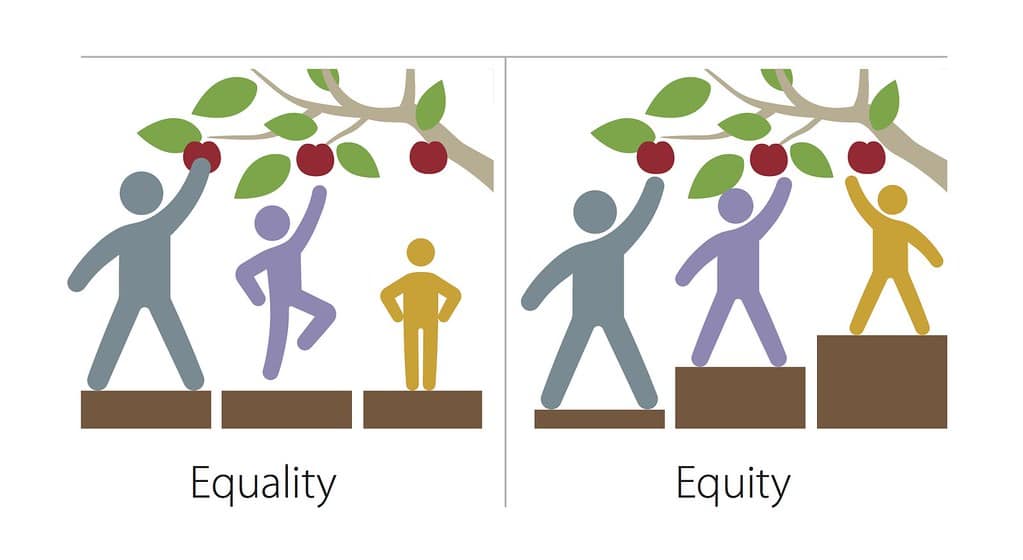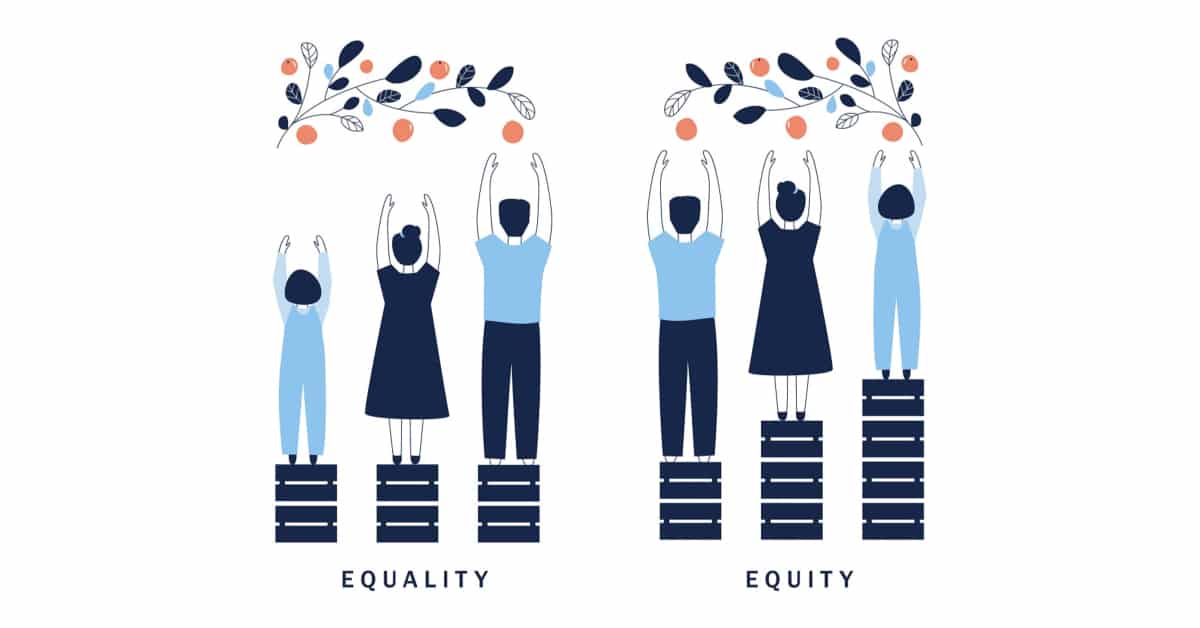Gender equity means fairness of treatment for all genders according to their respective needs. It strives to bring all the genders to an equal playing field. Gender equity doesn’t equate one gender with another, instead, it attempts to facilitate equal opportunities for all genders to overcome their historical and social disadvantages by ensuring fairness and justice in the distribution of resources to all genders.
It recognises the individual needs of each gender and addresses them in an intersectional manner that can redress the gross imbalances created between the male-female binary.
Difference between gender equality and gender equity
Gender equality means that an individual’s rights, responsibilities and opportunities will not be determined by the sex they are assigned at birth. While gender equity is the equal treatment or treatment that might be considered equivalent in terms of rights, benefits, obligations, and opportunities.
If the exact same opportunities, rights and privileges are given to all genders then it would be a historically catastrophic assumption that both men and women started out at the same position. But that is far from the truth. The socio-historical oppression of women and queer individuals has marginalised them for centuries. So, giving a cis-gender heterosexual man and woman or queer individual the same rights and social location will not bridge the gap that exists in our gender biased society. It would unfortunately endorse the distinction and the pre-existing bias by maintaining the gap.
At a time when the idea of the gender binary is being challenged, equity is needed to ensure non-binary and queer voices are heard loud and clear. Although, gender equality is the ultimate goal, it is only through gender equity that it can it be achieved.
Also read: Women & Circular Economy: Mainstreaming Gender Equity For Sustainability
But gender equity states that the individual who is historically the most marginalised, should be given more and better opportunities than the gender enjoying the perks of living in a gender biased society. This means that one has to start at the very bottom. Gender equity is a part of intersectional feminism that enables the most oppressed individual to climb up the ladder and demand equality. The concept fairness only comes when all the genders start out from the same level which they did not
Feminism and gender equity
A question that could arise in this context is – If equality is the end goal shouldn’t we call it “equalism” instead of feminism? Gender equity is essential while talking about feminism because then it invalidates the conservative interpretation of “equalism.” The moment we say “equalism,” we are invalidating the entire history of oppression faced by women and non-binary people.
But gender equity states that the individual who is historically the most marginalised, should be given more and better opportunities than the gender enjoying the perks of living in a gender biased society. This means that one has to start at the very bottom. Gender equity is a part of intersectional feminism that enables the most oppressed individual to climb up the ladder and demand equality. The concept fairness only comes when all the genders start out from the same level which they did not.
Gender equity shatters the historically dictated moulds of gender and gives people the choice to climb up the stairs as a way of compensation for their historical mistreatment. Equality is a farfetched dream which is impossible to achieve without equity. But the term has been used in the past in ways that reinforce gender roles and stereotypes. Hence, the term should be used with awareness
To aspire for equality amongst all genders, which is the ultimate goal of feminism, we must first ensure gender equity. Each gender should be provided with the ammunitions that cater to their individual needs. For example, the need of a cis-gender woman and a transgender woman are not same. Similarly, a cis woman with class and caste privilege does not need the same opportunities or rights as a marginalised, oppressed class, oppressed caste man. Equity hence ensures an intersectional view of development in the society.

Inequity means unfair competition which will not result in justice. In rural India where infanticide, femicide and child marriage are still practiced, one cannot give a man and a woman the same opportunities for them to reach the same social location. In this case, the woman needs to be empowered first to reach the position her counterpart currently occupies. It is only then that they both can be empowered to reach more privileged positions in the society.
Equity states that movement across the otherwise rigid caste class boundary is possible. It is only after the class-caste boundary is breached that true equality can be achieved. Modern feminism thus aims for equity where men, women and non-binary people have their own specific rights. It allows individuals of all genders the resource, social capital and opportunities to be who they are.
Gender equity shatters the historically dictated moulds of gender and gives people the choice to climb up the stairs as a way of compensation for their historical mistreatment. Equality is a farfetched dream which is impossible to achieve without equity. But the term has been used in the past in ways that reinforce gender roles and stereotypes. Hence, the term should be used with awareness.
Also read: Casteism In Places Of Equality: Dalit Bahujan Women’s Experiences In The Development Sector
Featured Image Source: Human Rights Careers
About the author(s)
Udhriti Sarkar is a post-graduate student at Calcutta University. When she is not obsessing over fictional characters, she observes people and writes about them




